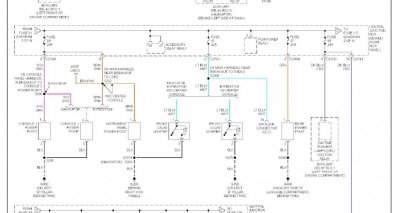Yosemite Sam
Active Member
I have a 2017 Expedition EL. I wanted to use the right, rear auxiliary power plug (cigarette plug) to keep a floating charge across the battery. After connecting the float charger (13.2 VDC) to the plug I was only seeing a 12.5 VDC reading at the battery post.
My question is: why am I seeing a .7 VDC drop from the rear auxiliary power plug to the vehicle's battery post? It's almost as if it's going through a silicon diode before reaching the battery post but that doesn't make any sense because it shows a normal output voltage when measured at the plug!
Does anybody have a wiring diagram of the auxiliary plugs that would show the full physical route of the auxiliary plug?
My question is: why am I seeing a .7 VDC drop from the rear auxiliary power plug to the vehicle's battery post? It's almost as if it's going through a silicon diode before reaching the battery post but that doesn't make any sense because it shows a normal output voltage when measured at the plug!
Does anybody have a wiring diagram of the auxiliary plugs that would show the full physical route of the auxiliary plug?


